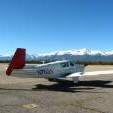How close is too close?
How close is too close?
34 members have voted
-
1. How close laterally?
-
3nm2
-
2nm2
-
1nm6
-
When I can read the N number on the fuselage22
-
When I see the whites of their eyes2
-
-
2. How close vertically?
-
1000' (ATC IFR-ish separation)3
-
500' (ATC VFR-ish separation)14
-
300' (combined static/transponder tolerance)8
-
When I can read the N number on the fuselage8
-
When I can tell if they cleaned the belly before flight1
-
-
Members Online


Recommended Posts